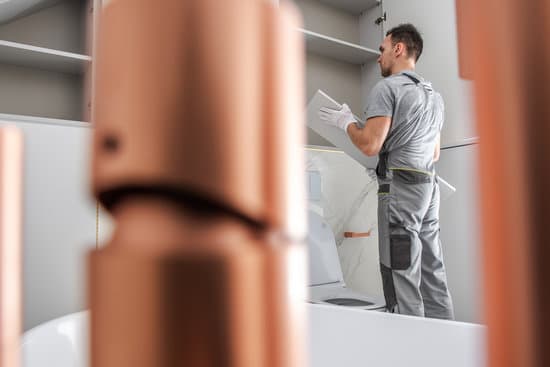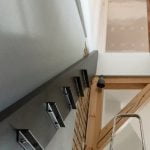Cell phone coverage has become a crucial aspect of our daily lives, providing us with the ability to stay connected and access information at our fingertips. However, it can be incredibly frustrating when we experience poor signal strength or dropped calls within the confines of our homes. In this article, we will explore various methods and solutions to improve cell phone coverage in your home.
Having reliable cell phone coverage at home is essential for numerous reasons. Firstly, it allows you to stay connected with family, friends, and colleagues without any interruption. Whether it’s making important business calls or video chatting with loved ones, a strong and stable signal ensures seamless communication.
Additionally, having good cell phone coverage at home enables you to access the internet faster and more efficiently. As many of us rely on our smartphones for work tasks, online shopping, streaming entertainment content, and staying up-to-date with news and social media updates, a weak signal can hamper our productivity and overall user experience.
Moreover, in times of emergencies or during natural disasters when landline connections may be disrupted, being able to make reliable cellular calls from the comfort of your own home becomes even more critical. To ensure that you have a dependable cell phone connection at all times within your home, it is crucial to identify the factors that affect cell phone coverage in your specific location.
By understanding these factors and implementing appropriate measures discussed within this article – such as conducting signal strength tests, utilizing Wi-Fi calling features, investing in cell phone signal boosters or external antennas – you can significantly enhance your overall cell phone coverage experience at home.
So let’s dive into the various techniques and tools available to improve cell phone coverage within the confines of your own home.
Identifying the Factors Affecting Cell Phone Coverage in Your Home
When it comes to improving cell phone coverage in your home, it is important to first understand the factors that affect your signal strength. By identifying these factors, you can determine the best solutions for enhancing coverage and ensuring seamless connectivity.
One of the main factors that affect cell phone coverage is the distance between your home and the nearest cellular tower. The farther away you are from a tower, the weaker your signal will be. Additionally, obstacles such as buildings, trees, and hills can interfere with the signal’s path and reduce its strength when it reaches your home. Understanding the physical layout of your surroundings and any potential obstructions will help you pinpoint possible areas of weak signal.
Another factor to consider is the type of building material used in your home. Certain materials, such as concrete or metal, can act as barriers that block or weaken cell phone signals. If your home has thick walls or a lot of metal components, this can significantly impact your signal strength. Identifying these material-related limitations will guide you in selecting appropriate solutions to improve coverage.
Finally, it is important to consider network congestion as a factor affecting cell phone coverage. During peak usage times or in densely populated areas, multiple users competing for bandwidth on a particular network can result in slower data speeds and poorer call quality. Being aware of these congestion issues will help you explore different network providers or alternative solutions like Wi-Fi calling.
By examining these key factors – distance from cellular towers, physical obstructions within your surroundings, building materials used in your home, and network congestion – you can gain valuable insights into why you might be experiencing poor cell phone coverage at home. Armed with this knowledge, you’ll be better equipped to identify specific solutions outlined throughout this article that will effectively boost your signal strength for improved connectivity within your own space.
Conduct a Signal Strength Test
Conducting a signal strength test is an essential step in improving cell phone coverage in your home. By understanding the quality of your current coverage, you can identify areas for improvement and determine the most effective solutions. In this section, we will provide a step-by-step guide on how to conduct a signal strength test and check your current coverage.
Gather the necessary tools
Before conducting a signal strength test, make sure you have the following tools:
- Your cell phone: This will be used to check the signal strength and quality in different areas of your home.
- A notepad or spreadsheet: This will be used to record the signal strength readings in different locations.
- A signal strength measurement app: There are various apps available for Android and iOS devices that can measure the signal strength of your network. Some popular options include OpenSignal, Network Cell Info Lite, and LTE Discovery.
Perform the signal strength test
Once you have gathered the necessary tools, follow these steps to perform a signal strength test:
- Choose a location: Start by selecting a location in your home where you usually experience poor cell phone reception.
- Open the signal measurement app: Launch the app on your cell phone and allow it to access your location if prompted.
- Check the signal strength: Look for a section within the app that displays your current network information, including signal strength (measured in dBm or bars). Take note of the current reading.
- Move to another location: Continue moving throughout your home and repeat steps 2 and 3 in different areas.
- Record the readings: Write down or enter each reading into your notepad or spreadsheet for future reference.
After completing these steps, you will have a clear understanding of which areas in your home have weak or strong cell phone coverage. This information will help guide you when exploring solutions to improve your signal strength.
Exploring the Role of Wi-Fi Calling
Wi-Fi calling has become a popular solution for improving cell phone coverage in homes with poor signal strength. It utilizes an internet connection to make calls and send messages, instead of relying solely on traditional cellular networks. This section will explore how Wi-Fi calling works and discuss its various benefits.
How Wi-Fi Calling Works
Wi-Fi calling allows you to make and receive calls and texts over a Wi-Fi network using your existing cell phone number. It works by converting your voice calls into data packets that are transmitted over the internet, similar to how Voice over Internet Protocol (VoIP) systems work. The transition between Wi-Fi calling and cellular networks is seamless, ensuring uninterrupted communication.
To use Wi-Fi calling, you need a compatible device that supports this feature, as well as an active internet connection. Most modern smartphones support Wi-Fi calling, but it’s still important to check with your service provider to confirm compatibility. Once enabled, your phone will automatically switch to using the available Wi-Fi network for calls and texts when it detects a weak cellular signal.
The Benefits of Wi-Fi Calling
- Improved Coverage: One of the main benefits of Wi-Fi calling is that it extends your cell phone coverage beyond the reach of traditional cellular networks. By utilizing a stable Wi-Fi connection, you can make and receive calls even in areas where there is little or no cellular reception.
- Cost Savings: Another advantage of Wi-Fi calling is that it can save you money on your monthly bill. Since calls and texts are transmitted over the internet instead of using your mobile carrier’s network, they don’t count against your cellular plan’s minutes or messages allowance.
- Seamless Handover: With Wi-Fi calling, you can experience seamless handover between different types of networks without dropping calls or losing connections. It automatically switches from Wi-Fi to cellular or vice versa based on signal availability, ensuring a smooth communication experience.
- International Calling: Wi-Fi calling can be particularly beneficial for international travelers. By connecting to a Wi-Fi network, you can make and receive calls and texts without incurring hefty roaming charges or relying on local SIM cards.
Investing in a Cell Phone Signal Booster
Understanding Cell Phone Signal Boosters
One effective solution for poor cell phone coverage in your home is investing in a cell phone signal booster. A signal booster, also known as a cellular repeater, is a device that amplifies the existing cellular signal to provide stronger and more reliable coverage within your home. This device consists of three primary components: an outdoor antenna, an indoor amplifier, and an indoor antenna.
The outdoor antenna captures the weak cellular signal from outside and sends it to the amplifier, which boosts the signal strength. The amplified signal is then transmitted by the indoor antenna throughout your home, providing improved coverage.
Benefits of Using a Cell Phone Signal Booster
Investing in a cell phone signal booster can offer various benefits for improving coverage in your home. Firstly, it can significantly enhance voice call quality and data speeds by increasing the strength of the cellular signal. This means fewer dropped calls and faster download/upload speeds on your mobile devices. Additionally, using a cell phone signal booster can help extend battery life on your devices since they will no longer need to constantly search for a better signal.
Furthermore, a cell phone signal booster is compatible with all major carriers, so it doesn’t matter which network provider you use – you can still benefit from better coverage in your home. It also supports multiple users simultaneously, allowing everyone in your household to enjoy improved connectivity and better performance on their devices.
Choosing the Right Cell Phone Signal Booster
When considering investing in a cell phone signal booster for your home, it’s important to choose one that suits your specific needs and requirements. Factors such as the size of your house and the number of people using cellular devices will determine which type of booster would be most effective for you. It’s recommended to opt for a reputable brand that offers warranty coverage and has good customer reviews.
Research different models available on the market, comparing their specifications, performance, and pricing before making a decision. By investing in the right cell phone signal booster, you can significantly improve your cell phone coverage at home and enjoy seamless connectivity on all your devices.
Optimizing Your Home Layout
Having good cell phone coverage at home is essential for staying connected and being able to communicate with friends, family, and emergency services. One often overlooked factor that can greatly affect cell phone signal strength is the layout of your home and the arrangement of furniture and electronics within it. By optimizing your home layout, you can improve your signal reception and enjoy better cell phone coverage.
When it comes to optimizing your home layout for better signal reception, there are a few key factors to consider. The first is the location of your wireless router or modem. It’s important to position it in a central area of your home where the Wi-Fi signal can reach all areas equally. Avoid placing it near large objects or behind walls that can block or absorb the signal.
Additionally, the arrangement of furniture and electronics in your home can impact cell phone reception. Large objects such as bookshelves, cabinets, or appliances can obstruct and weaken the signal. It’s best to keep these objects away from walls where your wireless devices are located. If possible, try rearranging furniture to create clear paths for the signal to travel through.
Here are some tips for optimizing your home layout for better cell phone coverage:
- Keep wireless devices away from large metal objects or surfaces.
- Place wireless devices near windows or exterior walls for better line-of-sight with cell towers.
- Avoid placing wireless devices near appliances that generate electromagnetic interference.
- Ensure that furniture does not obstruct the path between your device and the nearest cell tower.
By making these simple adjustments to your home layout, you can potentially improve your cell phone coverage and experience fewer dropped calls or slow internet speeds. Take some time to assess the layout of your home and make any necessary changes to optimize signal reception in key areas where you use your cell phone most frequently.
| Tips for Optimizing Your Home Layout |
|---|
| Keep wireless devices away from large metal objects or surfaces. |
| Place wireless devices near windows or exterior walls for better line-of-sight with cell towers. |
| Avoid placing wireless devices near appliances that generate electromagnetic interference. |
| Ensure that furniture does not obstruct the path between your device and the nearest cell tower. |
Tips and Tricks for DIY Signal Boosters
Signal boosters can rapidly improve cell phone coverage in your home and help you avoid dropped calls and slow data speeds. While commercial signal boosters can be expensive, there are some cost-effective DIY solutions that you can try to enhance your coverage. These tips and tricks can be a game-changer for areas of your home with poor reception.
One simple DIY option is to create a homemade tin foil or aluminum foil signal booster. This involves wrapping the outer surface of a cardboard cutout or an empty soda can with foil and placing it behind your phone. The foil reflects and focuses the signal, potentially boosting its strength. While this method may not work perfectly, it is worth trying if you have limited resources.
Another option is to position your phone near a window or exterior wall, as signals tend to be stronger near these areas. You can also experiment with different orientations of your phone or try using speakerphone mode if you are experiencing poor reception during a call.
Additionally, consider using mobile apps that are designed to help monitor and improve signal strength. These apps provide detailed information about signal quality and allow users to identify the strongest cell tower in their vicinity. Some apps also offer tips on finding better reception by searching for available networks manually or switching between different network generation options (e.g., 2G, 3G, 4G).
By utilizing these DIY signal booster tips and tricks, you can significantly enhance your cell phone coverage at home without breaking the bank. While they may not be as effective as commercial solutions, they are worth considering if cost is a major concern.
| Tips | Benefits |
|---|---|
| Create a homemade tin foil or aluminum foil signal booster | Potentially boost signal strength |
| Position your phone near a window or exterior wall | Take advantage of stronger signals in these areas |
| Use mobile apps designed to monitor and improve signal strength | Gain insights on signal quality and find better reception options |
Consider Network Provider Options
Choosing the right network provider can significantly impact the cell phone coverage in your home. It’s important to research and compare different service providers to find the one that offers better reception in your area. Here are some steps you can take to consider network provider options and improve your cell phone coverage at home:
- Conduct Research: Start by researching the various network providers available in your area. Look for customer reviews, ratings, and feedback on their coverage quality. You can visit their websites or consult online forums and social media platforms to gather information about their network strength.
- Check Coverage Maps: Most service providers have coverage maps on their websites that provide an overview of their network strength in different locations. Use these maps to determine which provider has better coverage in your specific area. Pay close attention to the signal strength and availability of 4G or LTE networks.
- Ask Neighbors and Friends: Talk to people living nearby who are using different service providers. Ask them about their experience with call quality, data speeds, and overall coverage in your neighborhood. Their insights can give you a good idea of which provider might offer better reception for your home.
After conducting comprehensive research and comparing different service providers, you can make an informed decision about which one is most suitable for improving cell phone coverage in your home. Remember to consider factors such as network reliability, signal strength, data speeds, and customer support when making your choice.
Investing time in researching and selecting the right network provider will ensure that you enjoy seamless cell phone coverage at home, allowing you to make clear calls, browse the internet smoothly, and stay connected with family and friends without any interruptions or frustrations.
Utilizing External Antennas
In the quest to improve cell phone coverage in your home, one effective solution is to utilize external antennas. These antennas can significantly enhance signal strength and provide better reception for your mobile devices. By installing outdoor antennas, you can boost your cell phone coverage and enjoy seamless communication both inside and outside your home.
There are different types of external antennas available that cater to varying needs and requirements. One common type is the omni-directional antenna, which receives signals from all directions.
This type of antenna is suitable if you live in an area where the cell towers are distributed evenly around your home. On the other hand, if you have a nearby cell tower that provides strong signals in a specific direction, a unidirectional or yagi antenna may be a better option as it concentrates its reception towards that direction.
Installing external antennas involves a few steps but can make a significant difference in your cell phone coverage:
- Research and choose the appropriate antenna: Consider factors such as the distance from nearby cell towers, layout of your property, and the type of signal you need to boost.
- Determine the optimal location: Find a spot on your property that has good line-of-sight with the nearest cell tower. Typically, higher locations such as rooftops or poles provide better results.
- Mount the antenna securely: Use appropriate brackets and mounts to ensure stability and prevent damage from wind or other environmental factors.
- Connect the antenna to your device or signal booster: Use proper cables with low loss connectors to minimize signal degradation.
It’s important to note that installing external antennas may require professional assistance, especially if you’re not familiar with technical aspects such as aligning the antenna correctly or running cables safely. It’s recommended to consult experts or find reputable installers who can ensure proper installation for optimal performance.
By utilizing external antennas, you can improve signal reception and boost cell phone coverage in your home. This solution is especially beneficial for those living in rural or remote areas with weak signal strength. With enhanced signal strength, you can enjoy uninterrupted calls, faster data speeds, and better overall connectivity within the comfort of your own home. So if you’re struggling with poor cell phone coverage, consider installing outdoor antennas as an effective solution to improve your communication experience.
Troubleshooting Common Issues
Identifying Interference Factors
When it comes to troubleshooting common issues with cell phone coverage in your home, it’s important to understand the potential factors that can cause interference. Some of the most common culprits include physical obstacles such as walls, trees, and buildings that can obstruct the signal from reaching your device.
Additionally, electronic devices within your home like microwaves, cordless phones, and even baby monitors can emit signals that interfere with cell phone reception. Network congestion is another factor that can lead to poor coverage, especially in densely populated areas or during peak usage times.
Choosing the Right Solutions for Interference
Once you have identified the specific interference factors causing poor cell phone coverage in your home, there are several solutions you can explore to address these issues. One option is to move closer to a window or an area in your home where the signal is stronger. This simple adjustment could significantly improve your reception.
Another solution is to use a signal booster specifically designed to amplify weak signals and reduce interference. Signal boosters work by capturing external signals and amplifying them for better reception inside your home. They are particularly useful in areas with dense obstructions or where outside signals are weak.
Addressing Network Congestion Problems
Network congestion occurs when there are too many devices connected to a particular cell tower, resulting in slower data speeds and decreased call quality. To troubleshoot this issue, consider switching from cellular data to Wi-Fi whenever possible. By connecting your device to a reliable Wi-Fi network, you alleviate some of the burden on cellular networks and potentially improve call quality or internet speeds.
Additionally, you may want to communicate with your service provider about any ongoing network congestion problems in your area. They might be able to provide insights into peak usage times or suggest alternative solutions, such as changing plans or utilizing nearby cell towers that may have less congestion.
By addressing interference factors and network congestion problems, you can troubleshoot common issues with cell phone coverage in your home. Taking the time to identify these obstacles and explore appropriate solutions will enable you to enjoy more reliable reception and better call quality.
Future-Proofing Your Home
Understanding the Importance of Future-Proofing Your Home
As technology continues to evolve, it’s crucial to future-proof your home for long-term cell phone coverage improvement. While the current methods might work well for now, technological advancements and changes in network infrastructure can render them outdated or ineffective in the future. By taking proactive steps to upgrade your home, you can ensure that you enjoy seamless and reliable cell phone coverage for years to come.
Exploring Advanced Technologies for Long-Term Improvement
To future-proof your home and improve cell phone coverage in the long run, consider exploring advanced technologies that are designed to enhance signal strength and connectivity. These technologies provide better coverage and faster data speeds, ensuring a smooth experience even as more devices connect to the network.
One such technology is 5G. As 5G networks continue to roll out across the globe, upgrading your home with 5G-compatible equipment can significantly improve cell phone coverage. Upgrading to a 5G-capable router or modem can boost signal reception and enable you to take advantage of the higher speeds and lower latency offered by 5G networks.
Another technology worth considering is mesh networking. Mesh networks consist of multiple nodes placed strategically throughout your home, creating a network that blankets your entire property with strong Wi-Fi signals. This not only improves internet connectivity but also enhances Wi-Fi calling capabilities, allowing you to make high-quality calls using your internet connection rather than relying solely on cellular signals.
The Benefits of Smart Home Integration
Integrating smart home technology into your upgrades can also contribute to long-term cell phone coverage improvement. Smart devices such as smart thermostats, security systems, lighting controls, and voice assistants often rely on Wi-Fi connectivity. Upgrading these devices with those that support the latest Wi-Fi standards (such as Wi-Fi 6) can help ensure a stable connection and minimize potential interference.
Additionally, incorporating automation features into your smart home can optimize your cell phone coverage. For example, you can set up routines that prioritize network bandwidth during specific times of the day or shift devices to less congested frequency bands automatically. These features can help improve signal strength and call quality by minimizing interference from other devices and wireless networks.
By future-proofing your home with advanced technologies and integrating smart home solutions, you can stay ahead of the curve and enjoy uninterrupted cell phone coverage for years to come. These upgrades not only enhance connectivity today but also prepare your home for the advancements in cellular technology that lie ahead.
Conclusion
In conclusion, improving cell phone coverage in your home is essential for seamless communication and connectivity. By understanding the factors affecting cell phone coverage, conducting a signal strength test, exploring Wi-Fi calling, investing in a cell phone signal booster, optimizing your home layout, and utilizing DIY signal boosters or external antennas, you can significantly enhance your coverage.
One effective solution for poor coverage is investing in a cell phone signal booster. These devices amplify the existing cellular signals to provide better reception throughout your home. They are easy to install and can be a game-changer in areas with weak cell signals.
Optimizing your home layout by arranging furniture and electronics strategically can also improve signal reception. Keeping electronic devices away from walls and windows, where interference is more likely to occur, can help minimize signal disruptions. Additionally, considering network provider options and researching and comparing service providers can help you make an informed decision for better reception.
Lastly, future-proofing your home by upgrading options for long-term improvement is crucial. As technology continues to advance rapidly, staying updated with the latest trends and upgrading your equipment accordingly will ensure that you enjoy reliable cell phone coverage in the years to come.
By implementing these strategies and solutions, you can empower yourself to enjoy seamless cell phone coverage in your home. Say goodbye to dropped calls, slow internet speeds, and frustration caused by poor reception. With improved coverage, you will have the convenience of making clear calls and enjoying uninterrupted data connection wherever you are in your home.
Frequently Asked Questions
Why is my mobile signal so bad in my house?
There can be several reasons why your mobile signal is poor in your house. One common factor is the physical barriers that can obstruct the signal, such as thick walls or building materials like concrete or metal.
Additionally, the distance between your house and the nearest cell tower can also affect signal strength, as the farther you are from the tower, the weaker the signal may become. Another possibility is that there may be interference from other electronic devices within your house, especially if they operate on similar frequencies to your mobile network.
Is there anyway to increase cell phone signal strength?
Yes, there are ways to improve cell phone signal strength. One effective method is to use a signal booster or repeater device. These devices amplify and extend the reach of signals, enhancing their strength throughout your house.
Another option is to install a microcell or femtocell, which acts as a miniature cell tower inside your house and provides a strong signal within its range. Furthermore, ensuring that your phone’s software and firmware are up to date can help optimize its connectivity capabilities.
How do I fix a weak signal in my house?
To fix a weak mobile signal in your house, there are a few steps you can take. Firstly, try moving closer to windows or external walls as these areas often have better reception due to fewer physical obstructions. Alternatively, you can experiment with different locations within your house to find areas with stronger signals.
Secondly, consider using Wi-Fi calling if it’s available on your device and network provider; this allows you to make calls using an internet connection instead of relying solely on cellular signal strength. Thirdly, you might want to contact your service provider and inquire about any potential network issues in your area or ask for guidance on improving indoor coverage. Additionally, minimizing interference by keeping away from electronic devices that may disrupt signals could also help improve overall signal strength within your home.

I’m thrilled to have you here as a part of the Remodeling Top community. This is where my journey as an architect and remodeling enthusiast intersects with your passion for transforming houses into dream homes.





